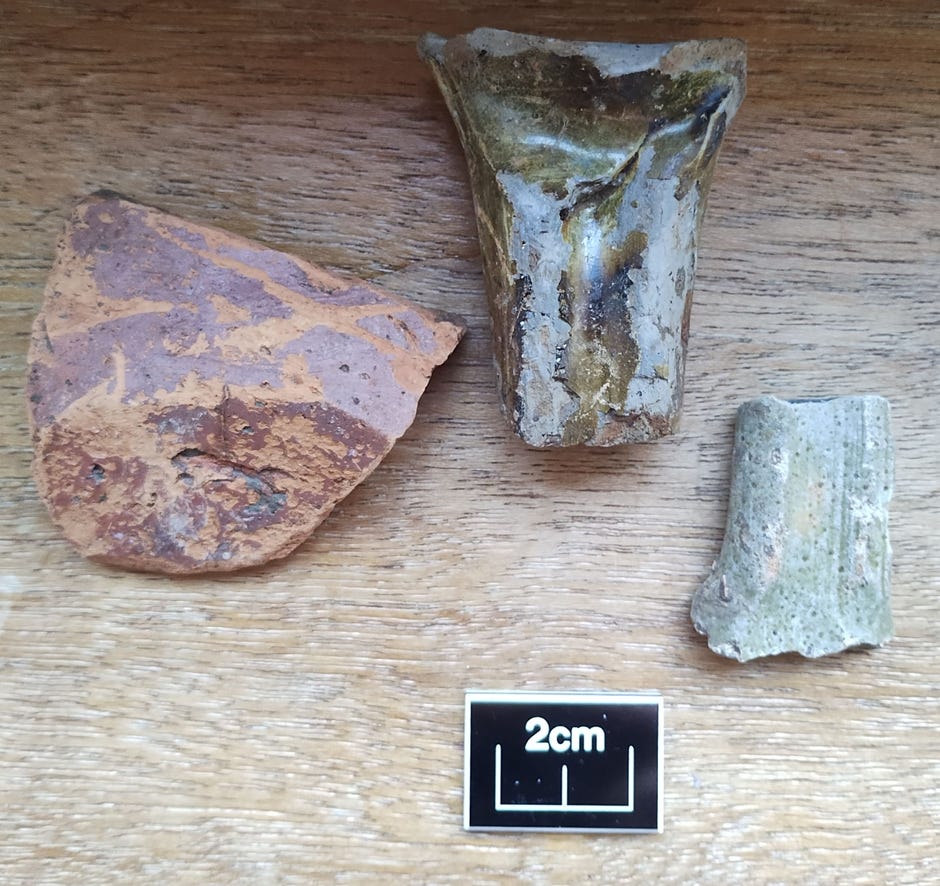Today will be my last blog of 2024…I hope you enjoyed them all and I hope that you have the best of Christmases and a wonderful new year. If you have loved ones tell them and hold them dear, if you are alone, please go for a walk and meet people, connect and don’t fall to despair. This may sound trite but its not intended to be so I always find Christmas hard personally and I am surrounded by people whom I love and who love me so please take care of yourselves!
Finally thank you for all the support and encouragement you’ve given me over the year, I think 2025 will be better and I hope that you will join us for the ride!
More on writing up.
You’ll remember that I wrote previously about my writing up process? I am lucky enough to know and work with experts across Scotland, some are passionate individuals who like me volunteer for fun but people have to eat so I am always happy to pay, but I am careful so only use cheap experts who are not VAT registered (ha ha…its not an oxymoron).
So over the summer we were digging round Manor Powis looking for the lost Roman Fort? There is also a castle there and we found some of the pottery from the castle that had been spread in the fields as rubbish. This is a report by my friend and colleague Derek Hall and this fine report cost £75, a bargain! And of course this is what your support buys.
Manor Powis tower house 2024, Ceramics, Derek Hall
Introduction
These excavations produced 7 sherds of pottery from Trenches 1, 2 and 3 Contexts 103, 201 and 301. These finds have been examined by eye and x10 hand lens and assigned to a fabric type and provenance based on similar material known to the author.
Context 103 SF1
This context produced a green glazed bodysherd in Scottish Post Medieval Reduced Ware with a grey core and interior, a bodysherd in abraded splash glazed Scottish Post Medieval Oxidised Ware with external horizontal decorative lines and an internal purple heat skin and a bodysherd of green glazed Scottish Redware with traces of a horizontal incised decorative line and a pellet.
Context 201 SF2
This context produced a knife trimmed basal angle in Scottish Post Medieval Oxidised Ware that is internally glazed green with an external purple heat skin, a rod handle junction in Scottish Post Medieval Reduced Ware glazed green with a central groove down the handle and a small green glazed decorative handle in Scottish Redware with a blue grey core.
Context 301 SF3
This context produced a basal angle from a tin glazed open vessel (plate or bowl?) internally decorated blue on white and externally glazed white that is of Anglo Dutch manufacture.
Discussion and Conclusions
Vessels in Scottish Post Medieval Oxidised and Reduced Wares (also known as Throsk-Type Wares) date to the 16th/17th centuries, are mass produced and represent a development in firing technology from the earlier Scottish Medieval Redwares of which the sherds from Context 103 and 201 in this assemblage which date to the 15th/16th centuries are examples (Caldwell and Dean 1992; Harrison 2002; Haggarty, Hall and Chenery 2011, 13). The single sherd from what would have been a high-status Tin Glazed vessel dates from the 16th/17th centuries and is potentially from the Low Countries (Holland). Such vessels from Scotland are normally described as being ‘Anglo Dutch’ as it is difficult to tell the difference between English and Dutch products without scientific analysis. However, It is worth pointing out the decorative similarities between the Manor Powis sherd and one published from Amsterdam (Gawronski 2012 254, 836).
The Scottish Redware sherds present in this assemblage are providing a background noise of earlier occupation on the site which is of interest and the basesherd of Tin Glazed Earthenware is a useful addition to the growing corpus of such finds from Scotland.
References
Caldwell, D H and Dean, V E 1992 ‘The pottery industry at Throsk, Stirlingshire, in the 17th and early 18th century’ Post Medieval Archaeol 26, 1–46.
Gawronski, J (ed) Amsterdam Ceramics A city’s history and an archaeological ceramics catalogue 1175-2011
Haggarty, G R, Hall, D W and Chenery, S 2011 Sourcing Scottish Redwares Medieval Pottery Research Group Occasional Paper No 5
Harrison, J G 2002 ‘The Pottery at Throsk, Stirlingshire c 1600–c 1800: context, links and survival’ Proc Soc Antiq Scot (132), 459-473.
Acknowledgements
The author would like to thank Nina Linde Jaspers of Terra Incognita and Tania Casimiro of Universidade NOVA de Lisboa for their views on the Tin Glazed basesherd.
Illustration 1- Trench 1 Context 103 SF2 Scottish Redware bodysherd, Scottish Post Medieval Reduced Ware bodysherd and Scottish Post Medieval Oxidised Ware bodysherd.
Illustration 2 - Trench 2 Context 201 SF3 Scottish Post Medieval Oxidised Redware basal angle with purple heat skin, Scottish Post Medieval Reduced Ware rod handle with central groove and Scottish Redware green glazed decorative handle.
Illustration 3- Top Basal angle from Tin Glazed vessel Trench 3 Context 301 SF1
Bottom Complete Tin Glazed vessel from Amsterdam (1625-1700), red arrow indicates similar decoration.
Conclusions
So the report clearly indicates that Manor Powis Castle had a range of table wares local and imported. How did those imported wares arrive…along the Forth presumably. Were they bought directly by the owners or from a market in Stirling? What else is in the fields…we hope to go back next year so watch this space!
Have a question? Get in contact!
I hope you all have a Happy Christmas and a Great New Year!
oh and a final ps…I’ll be on Digging for Britain about the Old Kilmadock Pictish Cross on the 14th January!








Merry Christmas, Murray! Thanks for all the news and your hard work, and I hope to see you all next year!
Same to you. Hope to get more revelations in '25,
Tioraidh